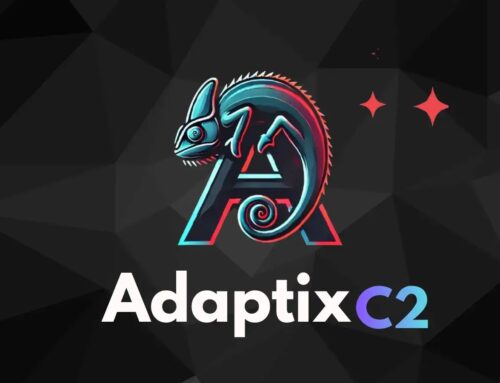
Python Based XillenStealer Attacking Windows Users to Steal Sensitive Data
Unmasking XillenStealer: A Python Menace Targeting Windows Users
In the evolving landscape of cyber threats, the emergence of new information stealers is a constant concern for cybersecurity professionals. Recently, a Python-based threat known as XillenStealer has surfaced, rapidly gaining traction among malicious actors. This stealer, publicly hosted on GitHub, poses a significant risk to Windows users by facilitating the exfiltration of sensitive data. Understanding its mechanisms and implementing robust defenses are paramount to protecting digital assets.
The Rise of XillenStealer: A Threat Brief
Cybersecurity researchers first observed XillenStealer in mid-September 2025. What makes this particular stealer concerning is its accessibility and ease of deployment. It features a user-friendly builder GUI, significantly lowering the technical barrier for threat actors to configure and launch attacks. This graphical interface allows operators to customize various aspects of the stealer, including its exfiltration channels. A common method observed involves configuring a Telegram bot for convenient data transfer, making pilfered information readily available to the attackers.
The immediate availability and simplified operation of XillenStealer on a platform like GitHub have undoubtedly contributed to its swift adoption. This accessibility means a broader range of malicious actors, from seasoned professionals to those with less experience, can leverage this tool for financial gain or other nefarious purposes. The ease with which it can be customized and deployed heightens the overall threat landscape for Windows environments.
How XillenStealer Operates: Attack Vectors and Capabilities
XillenStealer, like most information stealers, aims to covertly collect and exfiltrate sensitive data from compromised systems. While specific attack vectors can vary, common methods for its initial delivery likely include phishing campaigns, malicious downloads, or exploitation of unpatched software. Once executed on a Windows machine, the stealer is designed to scour the system for a wide array of valuable information, which can include:
- Login Credentials: Stored passwords, session cookies, and authentication tokens from web browsers, email clients, and other applications.
- Financial Data: Credit card details, banking information, and cryptocurrency wallet keys.
- Personal Identifiable Information (PII): Documents, images, and other files that could be used for identity theft.
- System Information: Details about the compromised machine, including operating system version, installed software, and network configurations, which can be used for further exploitation.
The Python-based nature of XillenStealer allows for cross-platform potential, though current observations highlight its focus on Windows users. Its modular design, facilitated by the builder GUI, means threat actors can easily adapt its capabilities to target specific types of data or bypass certain security measures, underscoring the need for adaptive defensive strategies.
Remediation Actions and Protective Measures
Mitigating the risk posed by XillenStealer and similar information stealers requires a multi-layered approach focusing on prevention, detection, and response. Proactive measures are key to safeguarding systems and data.
- Endpoint Detection and Response (EDR): Implement and maintain robust EDR solutions that can identify and neutralize suspicious activity, including file execution, process injection, and unusual network connections associated with stealers.
- Regular Software Updates and Patching: Ensure all operating systems, applications, and web browsers are kept up-to-date with the latest security patches. This helps close known vulnerabilities that attackers might exploit for initial access.
- Strong Password Policies and Multi-Factor Authentication (MFA): Enforce strong, unique passwords for all accounts and enable MFA wherever possible. This adds a critical layer of security even if credentials are compromised.
- Employee Awareness Training: Educate users about phishing, social engineering tactics, and the dangers of clicking suspicious links or downloading attachments from unverified sources. Human error remains a significant vulnerability.
- Network Segmentation and Firewalls: Implement network segmentation to limit the lateral movement of malware within the network. Configure firewalls to restrict unauthorized outbound connections, especially to unusual IP addresses or URLs.
- Data Backup and Recovery: Regularly back up critical data to secure, isolated locations. This ensures data can be restored in the event of a successful attack.
- Antivirus/Anti-Malware Solutions: Deploy and regularly update reputable antivirus and anti-malware software across all endpoints. While not always a silver bullet, these tools provide foundational protection.
Relevant Tools for Detection and Mitigation
| Tool Name | Purpose | Link |
|---|---|---|
| YARA Rules | Pattern matching for malware detection (e.g., specific strings or bytes from XillenStealer) | https://virustotal.github.io/yara/ |
| Endpoint Detection and Response (EDR) Solutions | Advanced threat detection, incident response, and endpoint protection | (Vendor-specific, e.g., CrowdStrike, SentinelOne) |
| Network Intrusion Detection/Prevention Systems (NIDS/NIPS) | Monitoring network traffic for suspicious activity and known attack signatures | (Vendor-specific, e.g., Snort, Suricata) |
Conclusion: Staying Ahead of Information Stealers
The emergence of XillenStealer serves as a stark reminder of the persistent and evolving threat posed by information stealers. Its Python-based architecture and user-friendly builder GUI exemplify the trend of threat actors leveraging accessible tools to lower the bar for sophisticated attacks. For IT professionals, security analysts, and developers, understanding these threats is no longer sufficient; proactive and layered defenses are essential. By integrating advanced security tools, enforcing strong policies, and fostering a culture of cybersecurity awareness, organizations can significantly reduce their attack surface and protect their sensitive data from threats like XillenStealer. Continuous monitoring and adaptation to new threat intelligence will be critical in staying ahead of these malicious campaigns.





